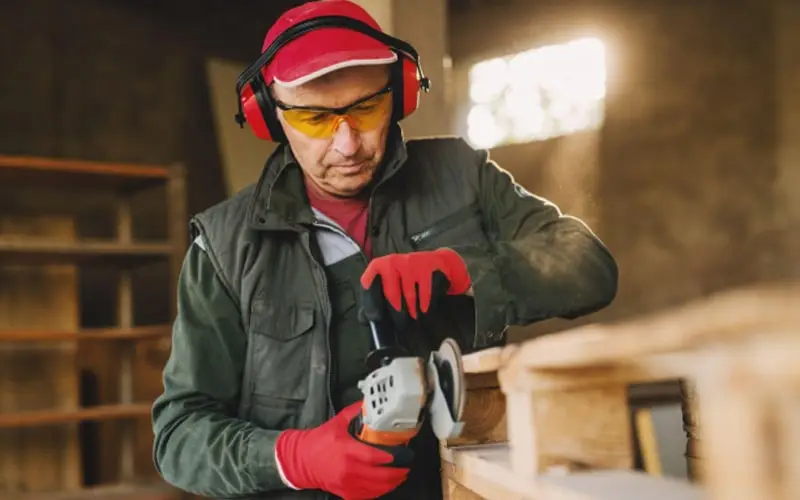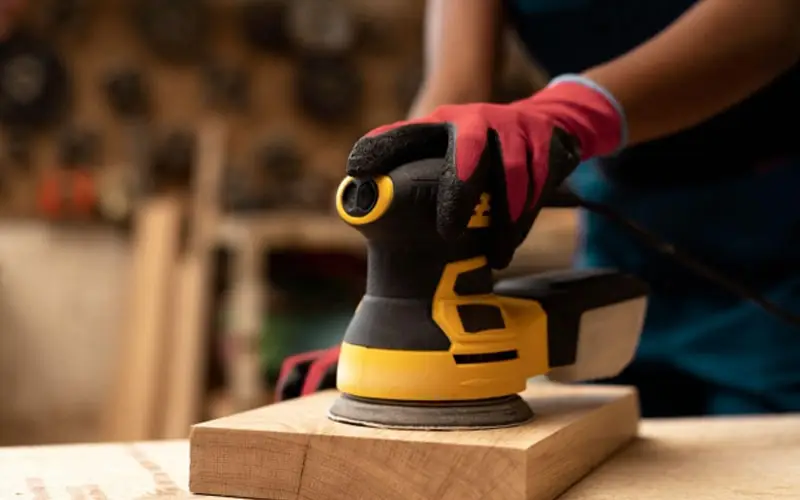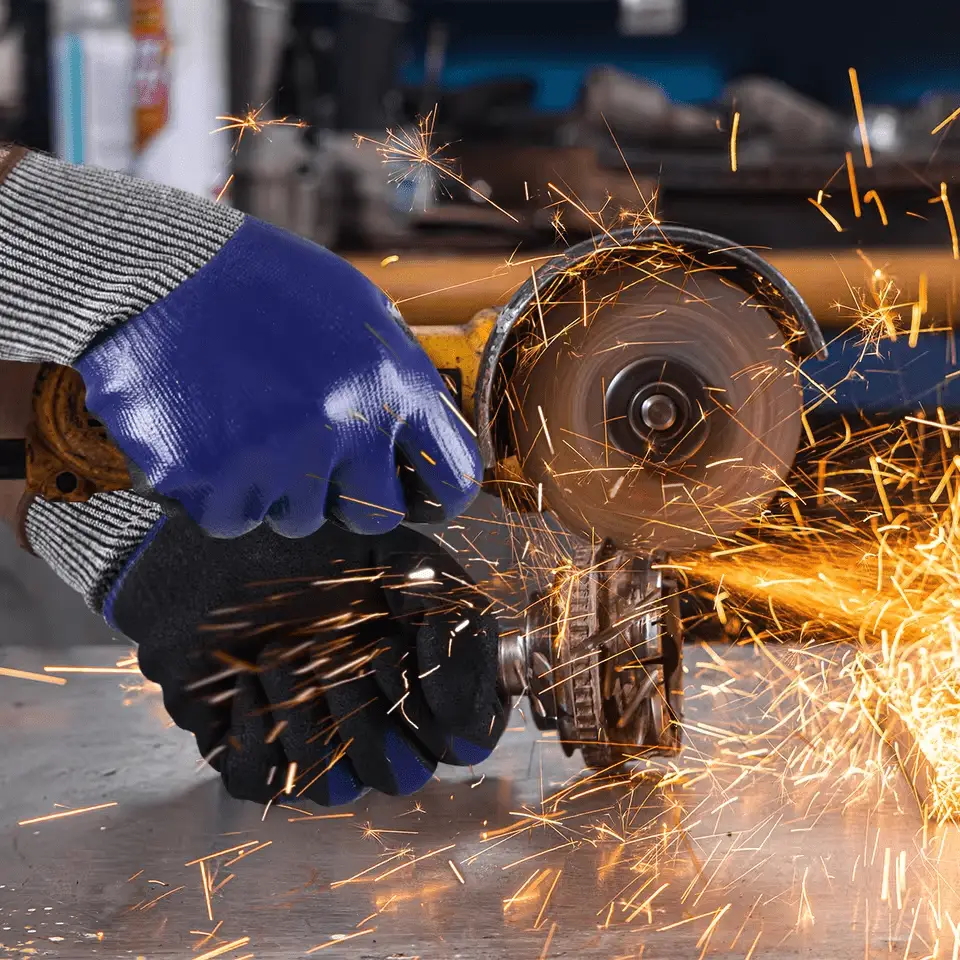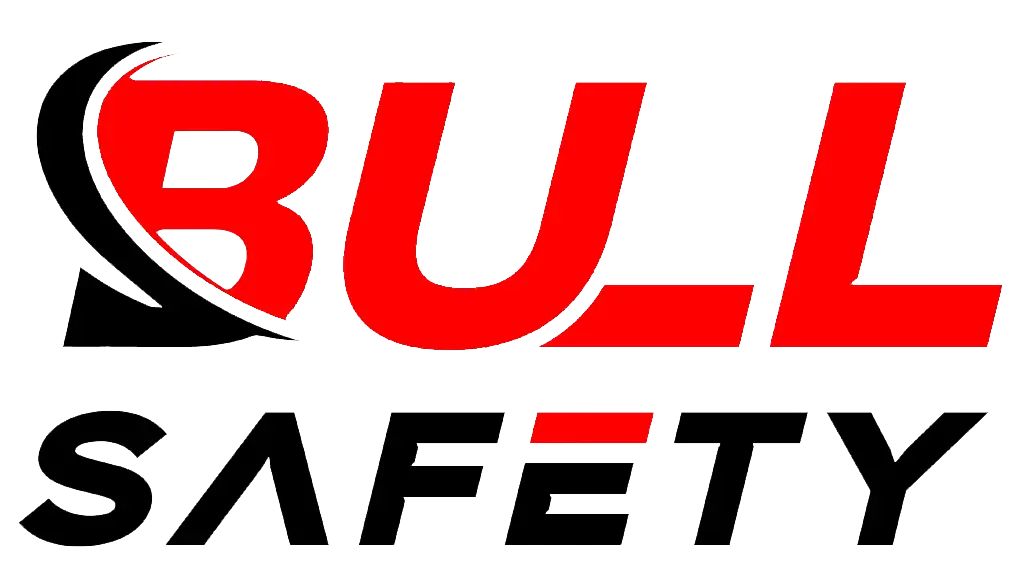
Work gloves are protective equipment designed to shield hands from hazards such as cuts, abrasions, and chemical exposures. They reduce the risk of injury, enhance grip, and improve comfort during tasks, thereby maintaining safety and productivity in various industrial and commercial environments.
How Do Work Gloves Protect Your Hands?
Work gloves serve as a barrier against hazards such as sharp objects, chemicals, and rough surfaces. They enhance grip, reduce the likelihood of slips, and minimize direct contact with harmful materials, thereby playing a crucial role in preventing injuries and ensuring safe job performance.

Layers of Protection
Gloves often have multiple layers. Some layers resist cuts from sharp materials, while others shield from heat or cold. These layers work together to provide optimal protection.
Impact Resistance
Many gloves have impact-resistant features like TPR panels that absorb shocks from bumps or falling objects, helping prevent bruises or fractures during intense tasks.
| Hazard Type | How Gloves Help |
|---|---|
| Sharp Objects | Cut-resistant fibers prevent injuries |
| Chemicals | Coatings block harmful contact |
| Heat/Cold | Insulating layers regulate temperature |
Why Do Workers Wear Gloves?
Workers wear gloves to protect against hazardous materials, prevent cuts and bruises, and maintain a secure grip. Gloves act as a protective barrier, ensuring safety and efficiency across various tasks and industries.
Physical Safety
Gloves stop direct contact with rough or sharp materials, reducing friction and preventing blisters. They also keep moisture away, which is essential in humid or wet work conditions.
Hygiene Considerations
Some workers handle chemicals, oils, or biohazards. Gloves keep hands clean and reduce cross-contamination risks, which is crucial in food processing and medical environments.
| Reason | Benefit |
|---|---|
| Prevent Cuts | Durable materials shield hands |
| Improve Grip | Coatings provide friction control |
| Avoid Chemicals | Blocks skin contact with harmful substances |
When Should You Wear Rubber-Coated Work Gloves? (OSHA Guidelines)
According to OSHA guidelines, rubber-coated gloves should be worn when handling chemicals, working on slippery surfaces, or performing tasks with potential abrasion hazards. These gloves protect against contaminants and provide a secure grip on materials.
Chemical Safety
Rubber coatings resist many chemicals, keeping harmful substances off the skin. They also provide a waterproof layer that prevents irritation and burns.
Grip in Wet Conditions
Rubber-coated gloves give better traction when handling wet or oily objects, helping to move items securely and reducing dropping hazards in fast-paced environments.
| Condition | Why Rubber Coating Helps |
|---|---|
| Chemical Exposure | Blocks harmful contact |
| Wet/Oily Tasks | Prevents slips and drops |
| Rough Materials | Adds abrasion resistance |
What Are the Benefits of Wearing Gloves at Work?
Wearing gloves at work offers multiple benefits, including protection against cuts and chemical exposures, improved grip, and enhanced comfort. They prevent accidents, boost efficiency, and provide peace of mind in high-risk environments.

Efficiency Gains
Workers concentrate better when they feel secure. Gloves help reduce breaks caused by cuts or irritation, leading to steady workflow and improved output.
Professional Image
Well-equipped teams appear more organized. Using proper gloves signals to clients and inspectors that safety is a priority, building trust and confidence in a company’s operations.
| Benefit | Impact |
|---|---|
| Injury Prevention | Cuts and bruises are minimized |
| Better Grip | Safer material handling |
| Professionalism | Builds trust with clients |
Conclusion
Work gloves are essential for workplace safety, preventing injuries, improving efficiency, and ensuring compliance with industry standards. Investing in high-quality gloves enhances worker protection and boosts overall productivity.



